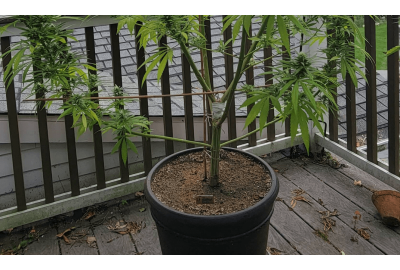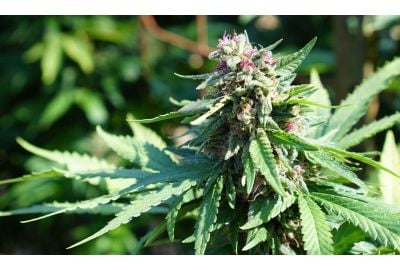The Ultimate Super Cropping Guide with Kyle Kushman
I want to explore a selection of advanced techniques I collectively refer to as super cropping.
They range from basic pruning through to a more extreme type of weed cropping I call Kushman Chiropractic.
Cropping cannabis is important to the plant’s health. It can head off problems like bud rot and mold, and can boost yields in a variety of ways.
This super cropping guide will show you why, when and how to super-crop, delivering bigger, better yields from stronger, healthier plants.
You’ll learn selective leaf pruning, branch and node pruning, topping, and bending and breaking aka snapping and twisting.
Don’t be disheartened if you make mistakes while learning these techniques. Some are more difficult to master than others.
Grab your next cannabis seeds and grow a few experimental plants - just make sure they’re not autos or fast versions strains!
I hope you’re excited. These techniques will genuinely change the way you care for your plants, forever.
What is super cropping?
People have their own definitions of super-cropping, but it refers to a collection of techniques.
These techniques are ways of physically manipulating your plants to improve plant health, quality and yield. They generally fit under the term High Stress Training (HST), though some can be more stressful than others.
Supercropping is all about organization, really. And a lot of it is counterintuitive. It’s about organizing the physical structure of your plant so it works more efficiently.
Take leaf pruning. By removing leaves that won’t ever see much light, the plant will divert resources to leaves that will. The same principle applies to nodes and branches, too.
Breaking branches is probably the most counterintuitive technique of them all! When executed correctly, however, a ‘broken’ branch will grow back stronger on the outside and more efficient on the inside.
Good super cropping results include: healthier, more vigorous plants with potential for heavier yields.
Are you drooling yet?
Super cropping cannabis can be challenging for beginners, and badly broken branches can increase the potential for disease.
As with anything worthwhile, practice makes perfect, and it always helps to have a good teacher!
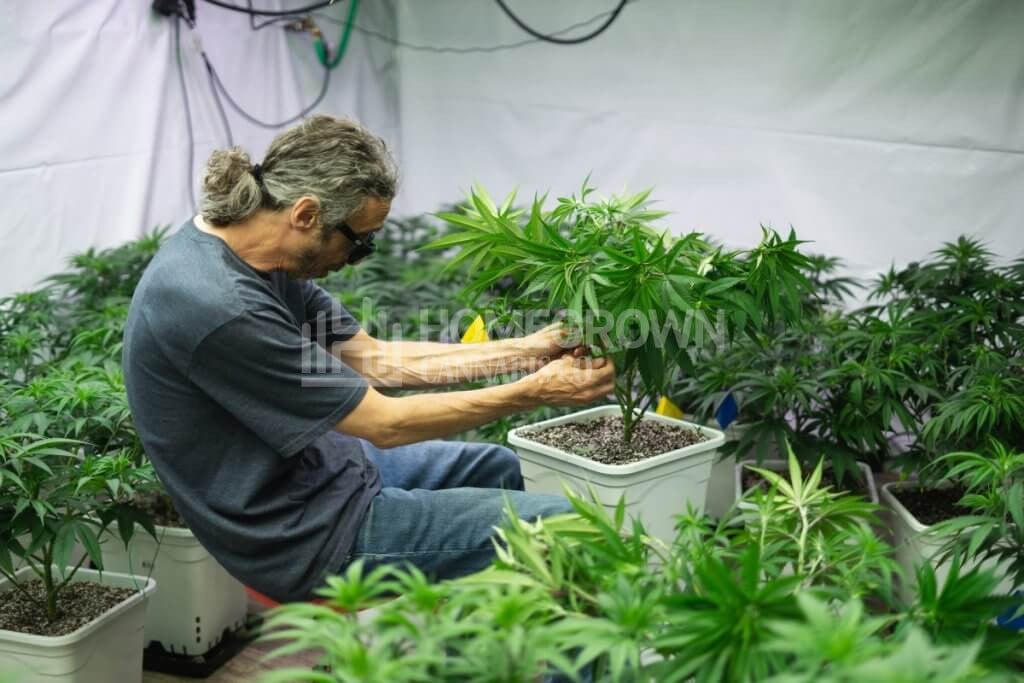
Pros and Cons of super cropping cannabis
Although super cropping can have exceptionally positive results, when it goes wrong, it can go very wrong.
Here's a quick look at the pros and cons:
| Pros | Cons |
| Many of the weed cropping techniques are quick and easy - you don’t have to dive straight into the difficult stuff. | Super cropping can risk of plant infection. |
| Super cropping requires little equipment. | Severe weed cropping mistakes can be costly. |
| The super cropping is ideal for limiting plant height. | Super cropping can result in significant recovery time. |
| Super cropping plants can produce bigger, more potent yields. |
What do you need to super crop your cannabis plants?
Super cropping is one of the cheapest ways you can boost yields, the only real cost is the time it takes to learn!
Here's what you'll need:
- Something to tie down the branches. String or twisty plant ties do a great job (avoid using anything sharp that might cut into the tissue).
- Duct tape (for those unavoidable mistakes).
- This easy supercropping guide.
I almost forgot - you should pause a moment to check out my super cropping video, come back as soon as you’re done!!! We have much to discuss :)
When to start super cropping
Knowing when to start super cropping is crucial. You can start with Selective Leaf Pruning as soon as your plants enter full veg, but you’ll want to wait until the plants are 10-12 inches tall before snapping and twisting.
Most super cropping takes place during the vegetative phase. Flowering plants devote most of their energy to flowering, leaving less for recovery.
When it comes to super cropping, there are a few essential things to remember:
- Don’t supercrop autoflowering or Fast Versions.
- Super cropping cannabis is a labor-intensive technique. It’s great for small-scale home-growers, but overwhelming for large, commercial grows.
- It's unwise to super crop cannabis suffering from deficiencies, infestations, or other forms of negative stress. It's a highly stressful technique, and weak cannabis plants will not flourish and might not survive.
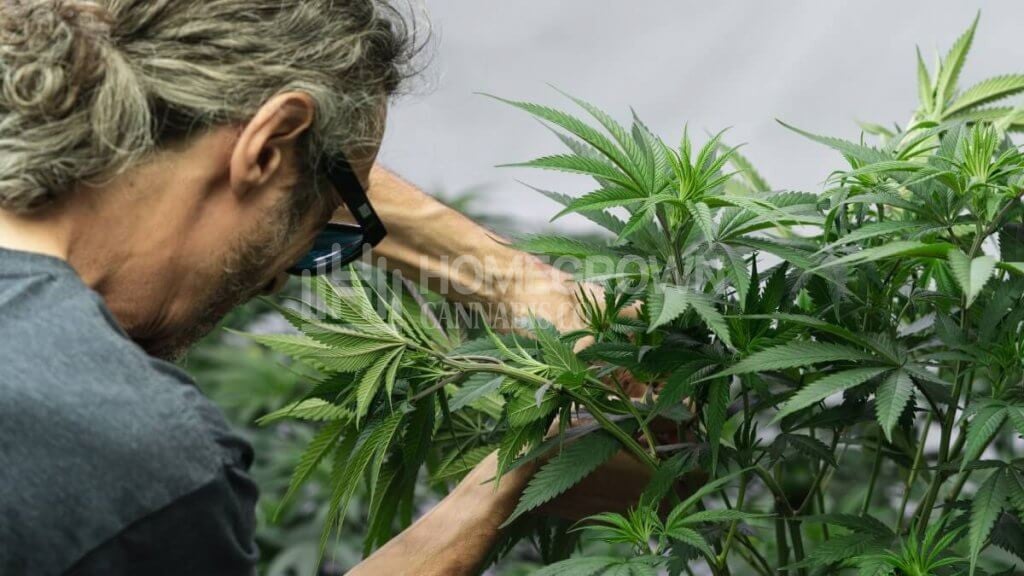
What are the four main super cropping techniques?
1. Selective leaf pruning
This super cropping technique involves removing larger shade leaves that cover nodes or budding sites, denying them access to the light.
Below the first layer of leaves, all interior leaves or leaves that are pointing at the interior of the canopy can be removed.
You don’t necessarily need scissors. Simply pinch the leaf and stem using your index finger and thumb, and, with a firm upwards motion, pluck it off.
Don’t start this type of pruning until your plant is growing vigorously.
Once you see the leaves crowding each other, shading the lower nodes, you’ll know it’s time to start selective leaf pruning.
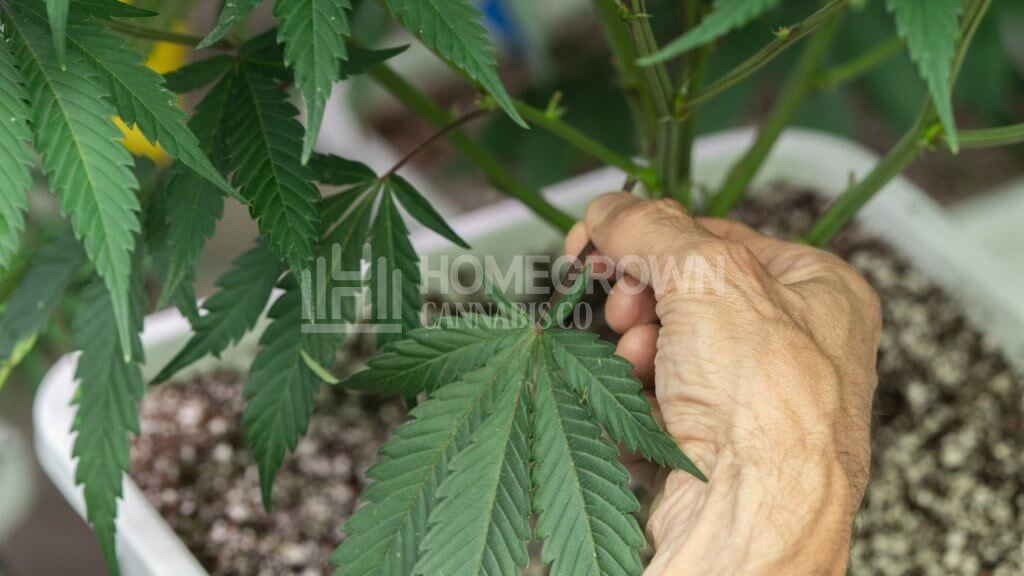
2. Branch and node pruning
This is a great way to improve the yield of your plants by eliminating less useful bud sites and delivering energy exactly where it’s needed.
Now, as your plant grows, it produces what we call sucker branches.
We call them sucker branches because they suck energy from the plant, but won’t produce anything worthwhile due to a lack of intense, direct light.
Removing some of the lower, weaker branches diverts energy to what is left, the budding and branching sites higher up, which do get direct light.
The same principle applies to nodes.
A node starts in the crevice where a leaf stem meets the main stem and then eventually becomes another branch.
Now, imagine you have a branch with six nodes, all with the potential of becoming branches.
That’s going to drain a lot of energy, so what you do is remove all but the top three nodes.
For an even more extreme example, imagine you have 15 branches with 15 nodes, that’s 225 nodes.
Now, if you remove all but the top three, that’s 180 nodes removed, which is 80% of the overall nodes on the plant.
What remains can grow nearly 80% faster with fewer sites drawing energy from your plant.
Thinning out plants like this is vital before flipping into flowering.
You don’t want nodes and branches crowding each other!
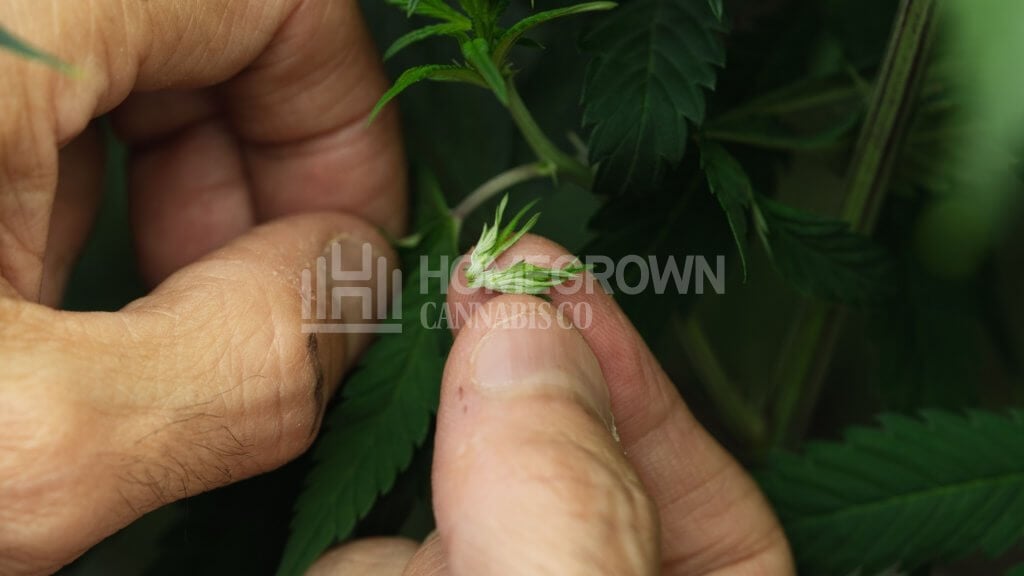
3. Topping and training
Topping is a supercropping method that increases the number of top colas.
Marijuana tends to grow like a Christmas tree with a very tall, central apex.
Topping gets rid of this apex and allows lower satellite branches to get equal light and become main colas as well.
Plants send all their growth hormones to the highest tip to outgrow everything around them, to get full sun.
Once topped, instead of one central branch getting all the good light, your satellite branches will be receiving much more energy.
Your apex tip will grow back as two tops. While it regrows, the secondary branches will catch up, giving you a nice, even canopy.
Some, in fact most, do this only once, but you can do it multiple times, increasing the number of branch tips each time.
Keep the number of tops relative to the overall size of the plant.
If you find one branch sticking above the rest, you can lower your lights, so the entire canopy will receive even light levels.
This is another good way to even out the canopy. You’ve done your topping, and all looks good except for a few satellite branches that have gone crazy and are sitting several inches higher than the rest.
Bend them down, then tie them up, so they stay down. Tie them to a bucket, use a stake, or weave them into a Scrog.
ScrOG (Screen of Green) isn’t just about putting up some trellis and letting your plants grow through it.
To maximize yields, take those eager branches (they can be six inches, a foot, or longer), and carefully, by slowly twisting and massaging as you bend them, weave the branch through the trellis.
Once secure, all the little nodes on these branches will stand up.
They’ll all become tops and grow roughly the same height.
That’s the advantage of scrogging. It maximizes your space, allowing you to take all different height branches and turn them into a super-efficient, level canopy.
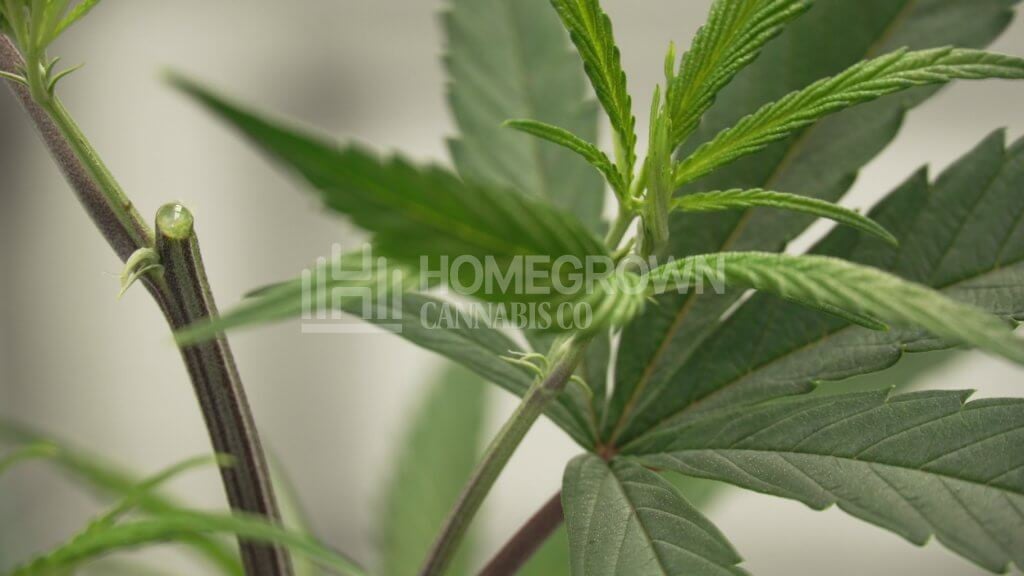
Super cropping also involves training a plant.
When you train cannabis plants, you strategically bend branches and tie them off.
This changes the branch's growing direction, allowing it to take on more expansive and flatter shapes.
It exposes more bud sites to the light and is perfect when used in conjunction with topping.
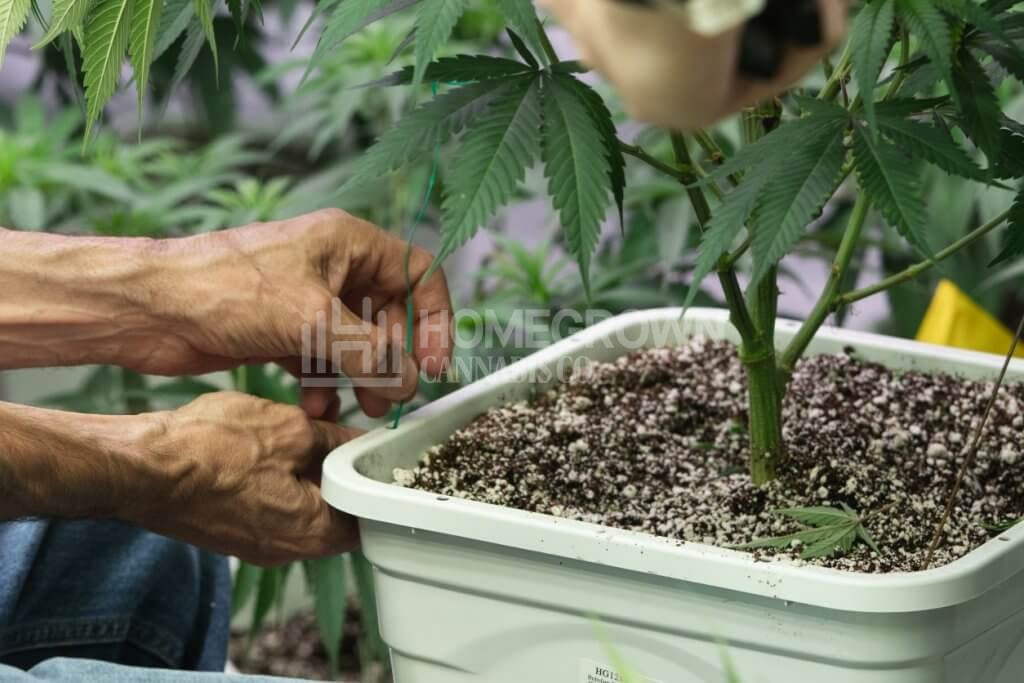
4. Snapping and twisting
Also known as bending and breaking, this is at the core of the super cropping techniques.
It is a difficult skill to master but has the most profound effect on the plant.
Your cannabis stock is made up of several layers:
- The skin you can see when you peel off the outer hurd.
- A bunch of fibrous material known as the hurd.
- The hollow center.
Using both hands, firmly yet delicately grasp a branch and twist in opposite directions until you feel and hear a snap, breaking the inner hurd while leaving the outer layer intact.
Over the next 24 hours, the plant repairs itself, and over the next several days, you’ll see a knuckle appear where you wounded her.
Just like when you break a bone, the repair is tougher. You’ll never break the same bone in the same place again.
That’s why this method is often called Kushman Chiropractic. Like calcifying a bone, we create a super-strong series of knuckles that increase the strength of the plant.
Plants take up and pass water and nutrients cell to cell. What that knuckle does is widen the cell to cell highway.
The wider highway allows faster and broader nutrient uptake. Do this on every stem from the bottom to the top.
Wait a week and do it again, but never in the same place twice.
What you end up with is a much stronger plant with a superhighway of cells.
You can start when the plant is a foot tall and keep going until flowering.
If you’re falling behind, you may super crop into the first week or two of flowering.
No matter how big your buds are, your plant will be three to five times stronger than normal and may not require additional support.
Your yields will increase as the cell to cell highway broadens, improving the plants’ ability to uptake water and nutrients. The wider the highway, the more traffic it will take.
It’s a tricky skill, but it’s worth it.
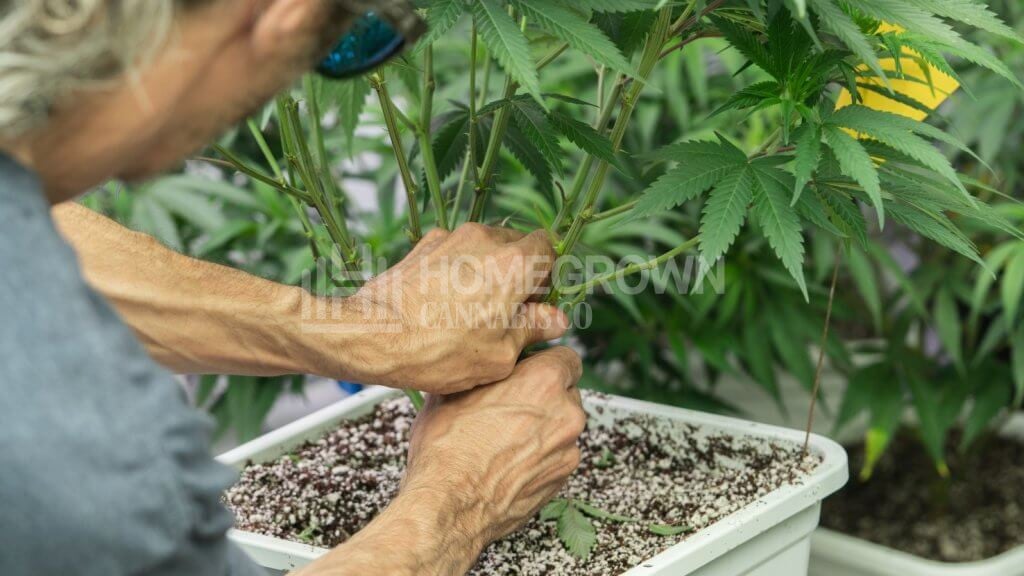
Super cropping guide: how to super crop your plants
Choose branches
The best time to super crop your marijuana is during the vegetative phase, shortly before those babies begin to bloom! When super cropping, choose older branches that are still green and pliable.
The goal here is to create a flat top canopy. Nothing beats a lovely green blanket of heavenly herbs!
Bend branches
Super cropping inflicts damage to the plants’ inner tissue without breaking the outer layer.
This process makes the stem pliable and easy to bend in any direction you want it to grow.
To achieve this flexibility:
- Take hold of the limb and firmly squeeze it using your thumb and forefinger where you want it to bend, softening up that section.
- Slowly twist the offshoot back and forth between your fingers for roughly ten seconds.
- Continue twisting it until the inside of the stem feels soft. It should now be pliable and loose.
- Gradually bend the stem in the direction you want it to grow, and secure it in place.
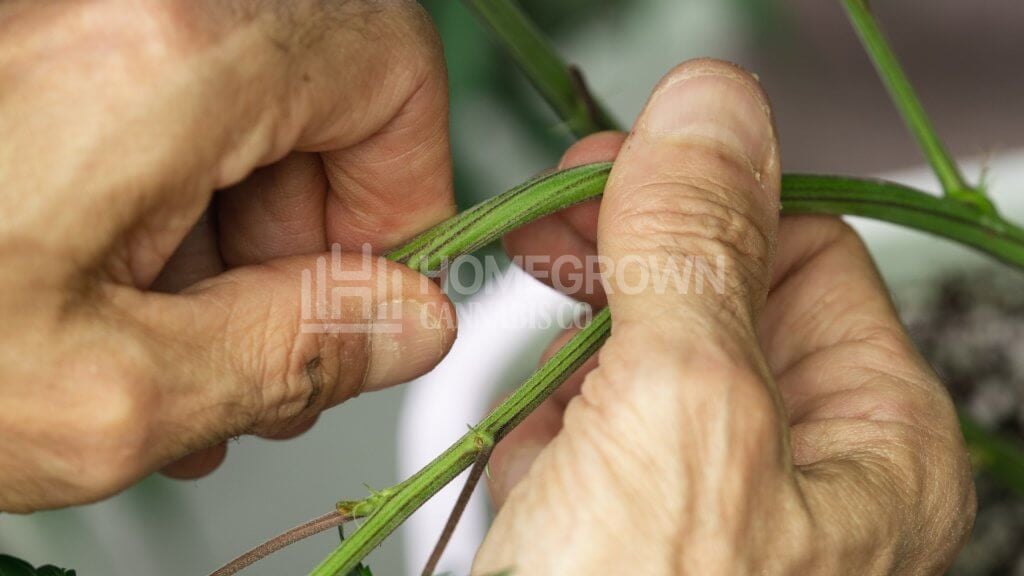
Tape up any slits in branches if needed
When you're super cropping, mistakes happen, and the outer skin often tears.
Luckily, there are only a few things duct tape can't fix.
Put on your doctor’s mask when this happens, as you’re about to engage in some plant surgery.
- After super cropping a section, immediately inspect the branch to see if any open cracks or tears are on the stem's skin. If you broke the outer layer, use duct tape to reinforce the offshoot.
- If there are no visible cracks or tears, secure the stem in place. String or twisty plant ties are great for this purpose.
Be firm but be careful.
The branches are elastic, but everything’s got a breaking point.
Take some time to learn just how far you can bend branches without snapping them.
Remove tape after one week or when the plant has healed
You should be able to remove any bandages (duct tape) around seven days after you've super cropped your cannabis plants.
If the joint still looks wounded, put on a new band-aid and leave it for a few more days until your lady develops her protective "knuckle."
As long as duct tape reinforces the stem, your cannabis plant will maintain all standard processes and transport nutrients as usual.
So no need to worry or panic, folks!
Should your plant try and straighten out any super cropped branches, tie them down using a Low-Stress Training (LST) technique.
Pro tip: It's natural for cannabis plant tissue to show some discoloration where you applied super cropping.
Chill out—your plants should be fine!
Troubleshooting: how to fix broken branches
It's normal for new growers to break a branch or two during their first attempt at super cropping.
Should this happen, relax and take a deep breath—you can fix it.
Wrap duct tape around the snap or tear to create a makeshift bandage.
Support the branch by securing it to a garden stake or tying it to another offshoot.
Remove the band-aid after a week or so, and hey: you’re good to go!
Super cropping results: bigger & better yields
Cultivators primarily apply super cropping to their marijuana plants to achieve larger yields in less space.
You can manipulate the floor space, light spread, and height restrictions, allowing your cannabis plants to reach potential you never dreamed of.
Supercropping delivers:
- Shorter cannabis plants with a more expansive, bushier structure, ideal for growing in small spaces and stealth cultivation.
- Thickened nodes on offshoots for support.
- More limbs and buds.
- A flat canopy, maximizing light exposure.
- Larger, more valuable yields.
- More efficient use of space.
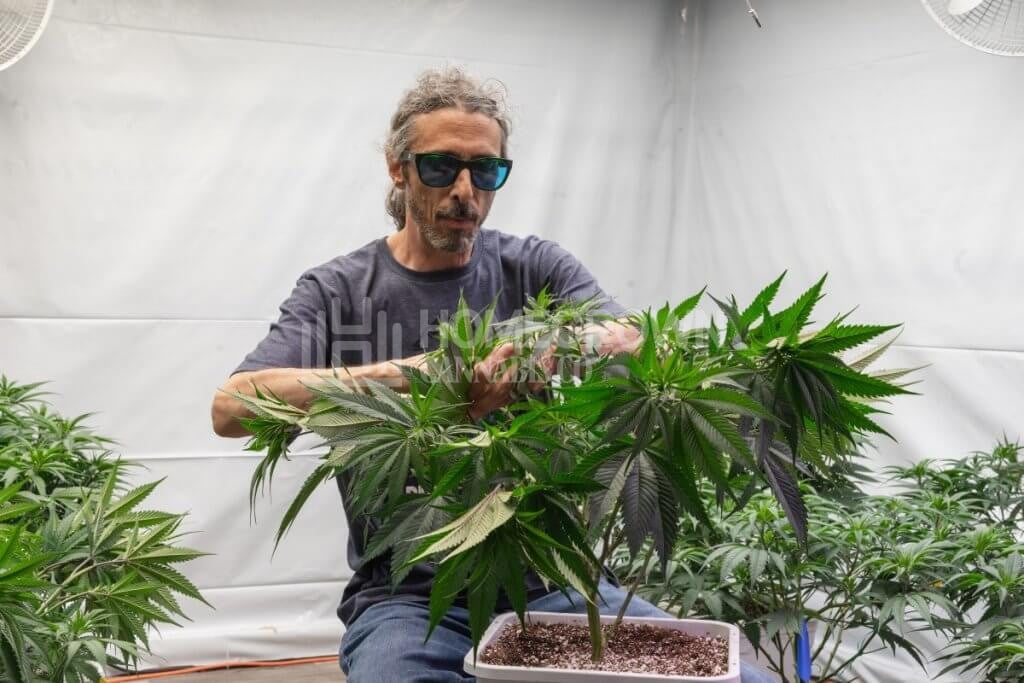
Final Points about super cropping
Super cropping 's a reasonably straightforward HST technique that you can start applying to your cannabis crop 3–4 weeks into the veg stage.
Supercropping should be performed from mid-vegetive and stopped once you begin flowering.
FAQs related to super cropping
How late can you super crop?
It's best to quit super cropping your cannabis plants as soon as they bloom.
Can you super crop the main stem?
You can super crop the central stalk at any point, as long as the plant is still shooting to the stars.
After folding and bending the stem down, it'll naturally curve back around, facing the light.
Attempting to twist the primary stem after the plant stopped growing vertically prevents it from turning around, leaving it in the dark—the wrong place for your plants.
Are you ready to boost your yield?
Like all good things, supercropping requires practice, and you may want a few grows under your belt before you tackle the difficult stuff.
With this ultimate super cropping guide, you now have all the knowledge you need to try it all out for yourself.
So go on—put these techniques to the test!
Discover for yourself how they can improve everything you love about harvesting your own weed—huge yields of THC-loaded, terpene-rich nugs.
For your first attempt at super cropping cannabis, remember to purchase premium seeds that are naturally resilient to stress.
Homegrown Store stocks the widest variety of naturally resilient, premium weed seeds currently available anywhere and my "How to grow cannabis indoors" guide will help you in every stage of the growth.
Check it out today!
About the Author: Kyle Kushman
Kyle Kushman is a legend in the cannabis community. He is the modern-day polymath of pot: cultivator, breeder, activist, writer, and educator. After winning no less than 13 Cannabis Cups, there’s nothing this guy doesn’t know about indoor growing - he’s been there, done it, and is still doing it to this day!
